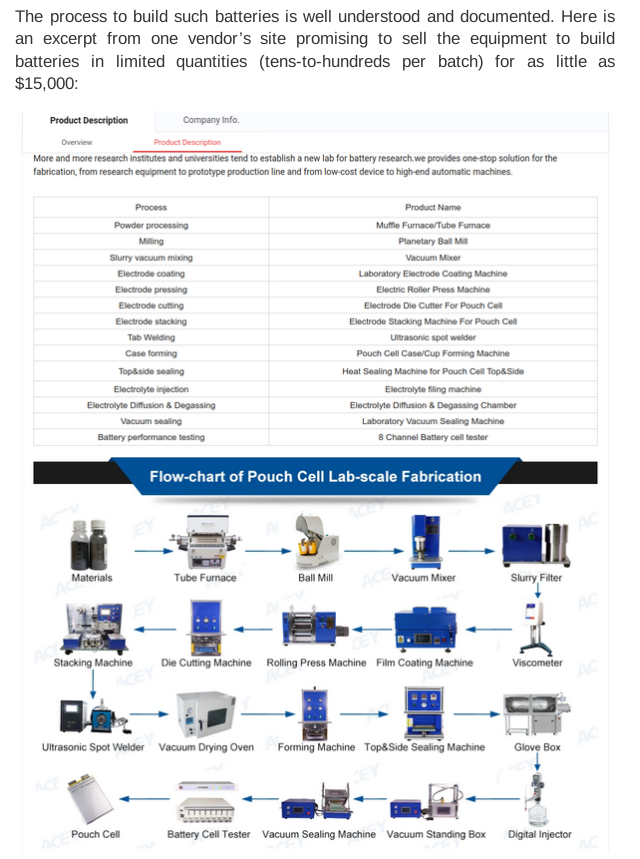this post was submitted on 21 Sep 2024
178 points (81.8% liked)
Technology
59392 readers
2708 users here now
This is a most excellent place for technology news and articles.
Our Rules
- Follow the lemmy.world rules.
- Only tech related content.
- Be excellent to each another!
- Mod approved content bots can post up to 10 articles per day.
- Threads asking for personal tech support may be deleted.
- Politics threads may be removed.
- No memes allowed as posts, OK to post as comments.
- Only approved bots from the list below, to ask if your bot can be added please contact us.
- Check for duplicates before posting, duplicates may be removed
Approved Bots
founded 1 year ago
MODERATORS
you are viewing a single comment's thread
view the rest of the comments
view the rest of the comments

Did you read it?
The article literally talks about inserting an explosive layer inside the battery at production. Just like the comment said.
It isn’t “any batteries can explode”.
What? 🤦 The comment I replied to said:
It seems clear that "they had apparently been modified at the production level" is referring to the pagers, rather than their batteries. But the article is explaining how it could have been that the batteries were the part of the pager that had the explosives (in which case it was the battery that was exploding).
You are inferring what someone meant, and then applying some super pedantic reasoning.
When manufacturing pagers, that includes the pager electronics, the case, and the battery.
The batteries themselves unmodified, standard batteries were not somehow hacked to explode. At some point in the manufacturing of the pagers which includes the battery, explosives were included.
I think I am inferring correctly, especially since the person you're talking about replied "of course not" to my question about if they read the article.
alrighty then. Dig your heels in.
i encourage you to re-read the original comment in this thread after reading the article 😂
You should do the same.
I am really curious: can you tell me, do you actually think the first commenter in fact read the article and was agreeing with its suggestion that the batteries could have been manufactured with explosives inside of them?
Nobody claimed that, but in retrospect I guess I can see how, read alone, the pull quote I selected from the article to be the title of this post could be interpreted that way.
Delete this entire post or shut up, bro. You’re being nuked with downvotes.